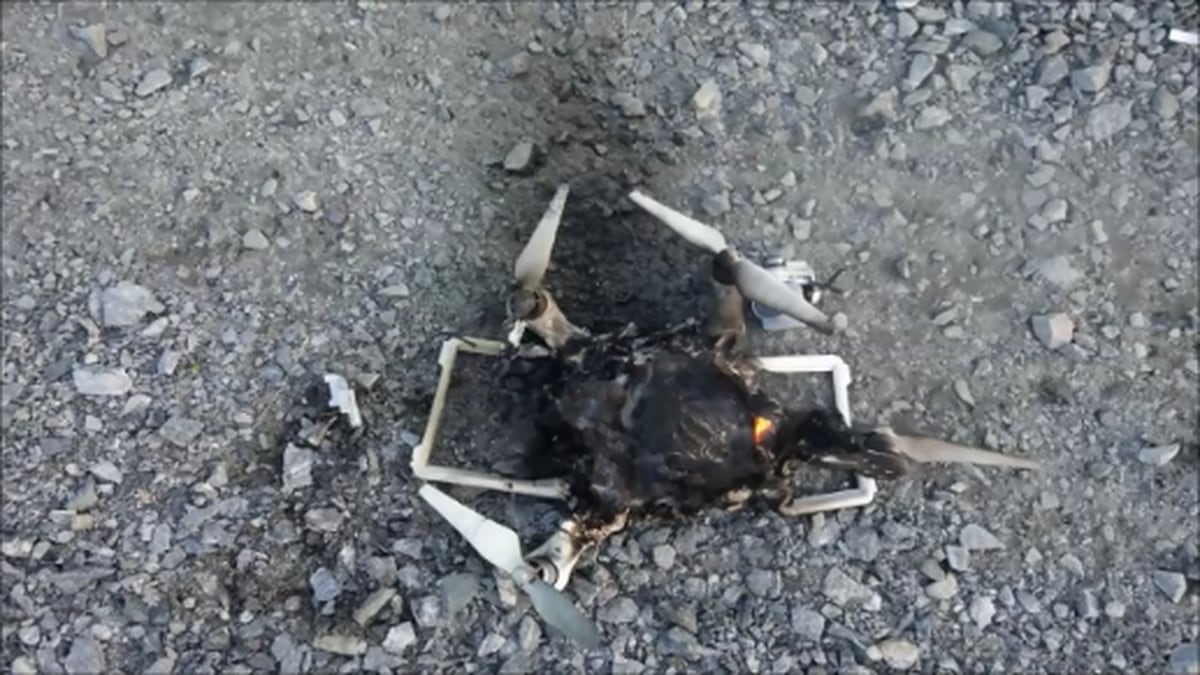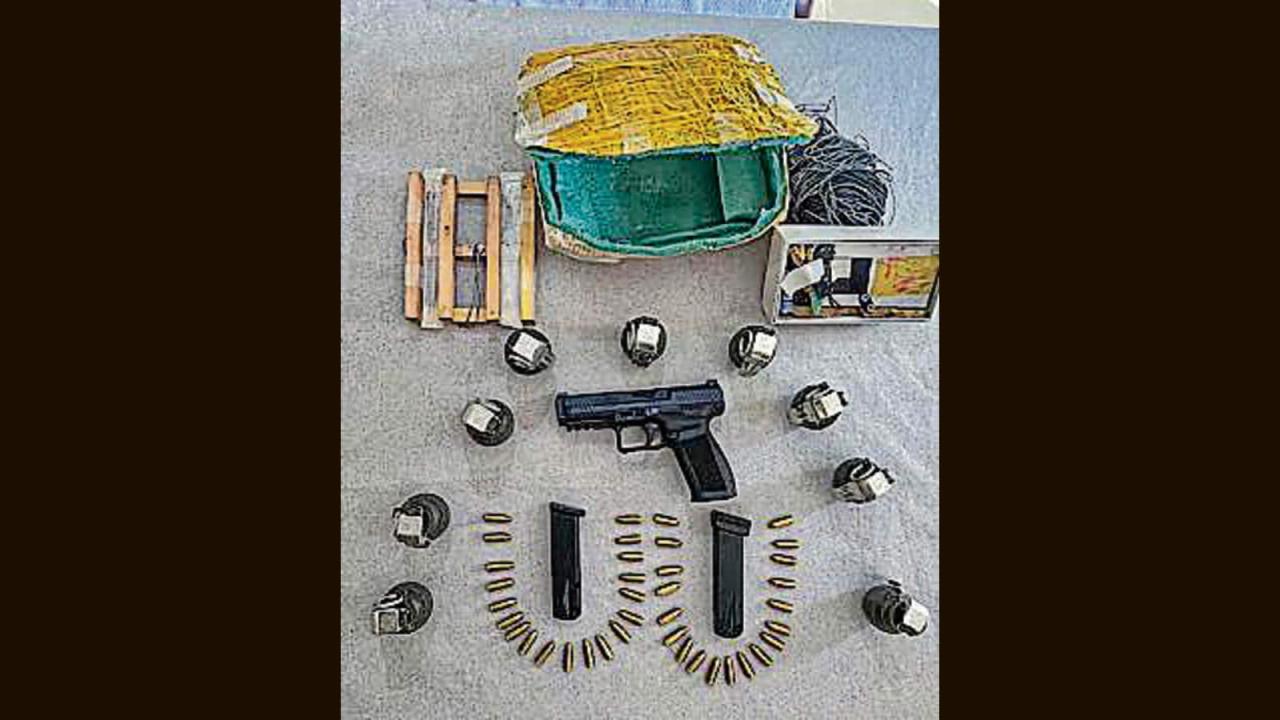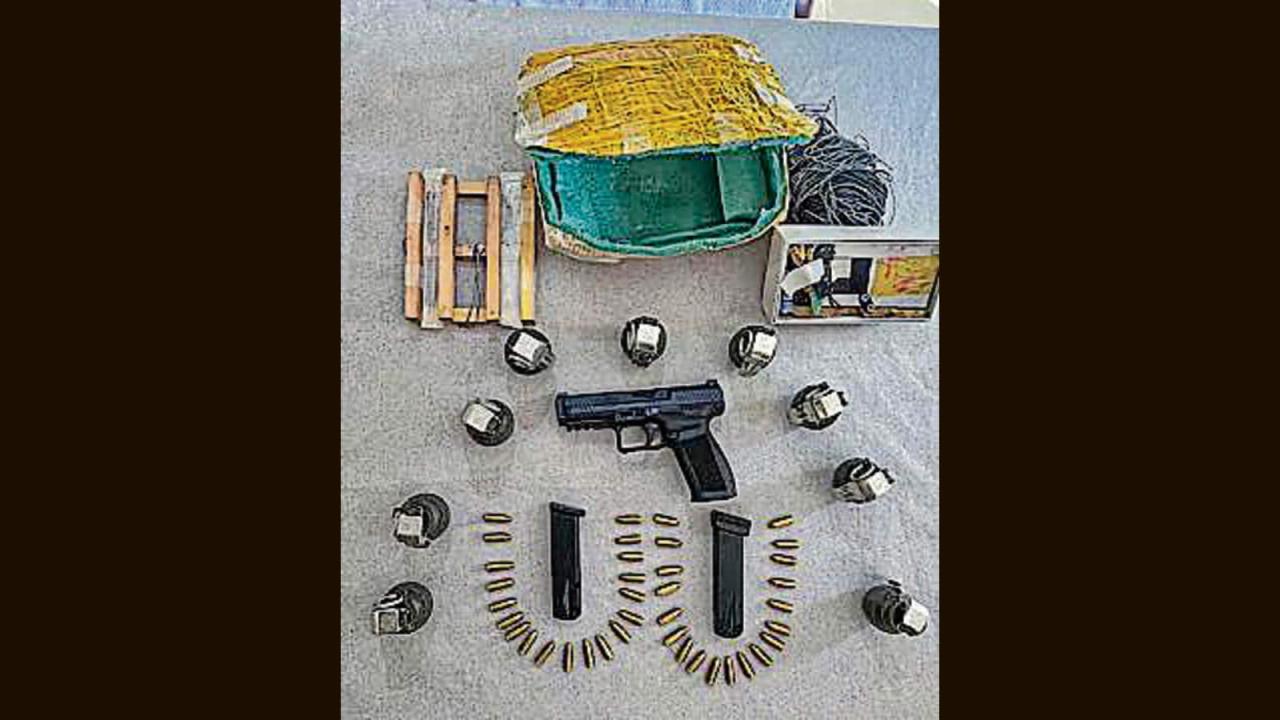Remington drone loads represent a significant advancement in unmanned aerial vehicle (UAV) technology, offering substantial payload capacities across various models. This allows for diverse applications ranging from high-resolution aerial photography and precision agriculture to critical infrastructure inspections and emergency deliveries. Understanding the capabilities, limitations, and regulatory aspects of these drones is crucial for safe and effective operation.
This exploration delves into the specifics of Remington drone models, their payload capacities, and the technological innovations enabling their efficient operation. We will examine diverse industry applications, crucial safety considerations, and the economic advantages of integrating these drones into various workflows. By addressing both technical details and practical implications, we aim to provide a comprehensive overview of Remington drone loads and their potential impact.
Remington Drone Models and Payload Capacity
Remington offers a range of drones designed for diverse applications, each boasting varying payload capacities and flight capabilities. The payload capacity is significantly influenced by several key factors, ensuring the right drone is selected for the intended task. This section details the specifications of several models and explores the factors determining their load-bearing capabilities.
Remington Drone Model Specifications
The following table provides a comparison of several Remington drone models, highlighting their payload capacity, dimensions, and maximum flight time. Note that these specifications are subject to change based on battery condition and environmental factors.
Understanding the specifics of payload capacity is crucial when selecting a drone for any task. For those interested in heavier lifting capabilities, investigating the details of remington drone loads is a good starting point. This information will help determine if a Remington drone suits your specific needs regarding weight and volume restrictions. Ultimately, careful consideration of Remington drone loads ensures safe and efficient operation.
| Model Name | Payload Capacity (kg) | Dimensions (L x W x H cm) | Maximum Flight Time (minutes) |
|---|---|---|---|
| Remington X1 | 5 | 60 x 60 x 20 | 30 |
| Remington X2 | 10 | 80 x 80 x 30 | 25 |
| Remington X3 | 20 | 100 x 100 x 40 | 20 |
| Remington X4 | 30 | 120 x 120 x 50 | 15 |
Factors Influencing Payload Capacity
Several factors contribute to a drone’s maximum payload capacity. Larger drones, with more robust frames and larger propellers, can naturally carry heavier loads. Advanced battery technology, such as higher energy density lithium-ion batteries, allows for longer flight times and heavier payloads. Powerful motors are essential for lifting and maintaining stability with heavier payloads. The overall design and engineering of the drone, including the weight distribution and aerodynamic efficiency, also play a crucial role.
Comparison with Competing Models, Remington drone loads
While precise comparative data requires access to competitor specifications, generally, Remington drones are competitive in their payload capacity within their respective weight classes. For example, the Remington X3, with a 20kg payload capacity, compares favorably with similar-sized drones from other manufacturers in terms of both payload and flight time. However, some competitors may offer specialized drones with superior payload capacities for specific niche applications.
Applications of Remington Drone Loads
Remington drones, with their impressive payload capacities, find application across numerous industries. The ability to carry substantial payloads opens up possibilities for efficient and cost-effective operations previously unattainable with smaller drones. This section highlights several key applications and the advantages they offer.
Industry Applications of Remington Drones
- Agriculture: Spraying crops with pesticides or fertilizers, aerial surveying and crop monitoring using high-resolution cameras and multispectral sensors. The increased payload capacity allows for larger areas to be covered in a single flight, increasing efficiency.
- Construction: Transporting building materials to hard-to-reach locations, site surveying and inspection using cameras and thermal imaging sensors. Larger payloads mean fewer flights and faster project completion.
- Delivery and Logistics: Delivering small packages and urgent medical supplies in urban and rural areas. Increased payload capacity allows for larger or heavier packages to be delivered efficiently.
- Search and Rescue: Carrying search equipment, thermal cameras, and emergency supplies to disaster areas. The ability to carry heavier equipment extends the range and capabilities of search and rescue operations.
- Infrastructure Inspection: Inspecting bridges, power lines, and other infrastructure using high-resolution cameras and sensors. The larger payload allows for more advanced and comprehensive inspection equipment to be deployed.
Advantages of Remington Drones
The primary advantage of using Remington drones lies in their ability to carry substantial payloads, leading to increased efficiency and reduced operational costs. This is particularly beneficial in applications where repeated trips with smaller drones would be time-consuming and expensive. The larger payload capacity also allows for the use of more sophisticated sensors and equipment, leading to improved data collection and analysis.
Hypothetical Scenario: Bridge Inspection
A Remington X3 drone is used to inspect a large suspension bridge. The drone carries a high-resolution camera, a thermal imaging camera, and a LiDAR sensor, all within its 20kg payload capacity. The drone follows a pre-programmed flight path, systematically capturing images and data of the bridge’s structure. Potential challenges include adverse weather conditions (high winds) and the need for precise flight control to avoid collisions with the bridge.
Safety and Regulatory Considerations for Remington Drone Loads
Operating drones with heavy payloads presents unique safety challenges. It is crucial to adhere to strict safety protocols and regulatory guidelines to mitigate risks and ensure safe operation. This section details potential hazards and relevant regulations.
Potential Safety Hazards
- Battery Failure: Overloading the battery or using a damaged battery can lead to overheating and potential fires.
- Mechanical Malfunction: Heavy payloads can stress the drone’s mechanical components, increasing the risk of failure.
- Adverse Weather Conditions: High winds, rain, or snow can significantly impact the drone’s stability and control, especially with a heavy payload.
- Payload Instability: Improperly secured payloads can shift during flight, affecting the drone’s stability and potentially causing damage or accidents.
Relevant Regulations

Operating commercial drones, especially those carrying substantial payloads, is subject to various regulations. These regulations typically cover aspects such as pilot licensing, airspace restrictions, and payload limitations. Operators must be familiar with and comply with all applicable local, national, and international regulations to avoid legal penalties and ensure safe operation. Specific regulations vary by country and region.
Safety Protocols Checklist
- Pre-flight inspection of the drone and payload.
- Verification of battery charge and health.
- Assessment of weather conditions.
- Securely attaching the payload to the drone.
- Following a pre-planned flight path.
- Maintaining visual line of sight (unless operating under specific exemptions).
- Having a backup plan in case of emergencies.
- Following all relevant safety regulations and guidelines.
Technological Aspects of Remington Drone Load Handling
Remington drones utilize advanced technologies to manage and stabilize heavy payloads during flight. The design features and engineering solutions are critical to ensuring safe and efficient operation. This section explores the technological aspects of Remington’s payload handling systems.
Payload Management and Stabilization
Remington drones employ sophisticated flight control systems incorporating GPS, IMU (Inertial Measurement Unit), and barometer data to maintain stability and precise positioning, even with heavy payloads. Advanced algorithms compensate for wind gusts and other external factors, ensuring smooth and controlled flight. Redundant systems are often incorporated to enhance safety and reliability.
Design Features for Safe Payload Handling

The design of Remington drones incorporates several features to facilitate safe payload handling. These include robust frames capable of withstanding the stresses of carrying heavy loads, optimized weight distribution to minimize strain on the drone’s structure, and secure mounting mechanisms to prevent payload shifting or detachment. Aerodynamic design minimizes drag, maximizing flight efficiency and range, even with heavy payloads.
Comparison of Load-Bearing Capabilities
The load-bearing capabilities of different Remington drone models vary significantly, reflecting the differences in their size, motor power, and overall design. Larger models, such as the Remington X4, achieve higher payload capacities through a combination of larger propellers, more powerful motors, and a more robust frame. The engineering solutions used are tailored to the specific requirements of each model, ensuring optimal performance and safety.
The efficient transport of goods using drones is a rapidly developing field, and Remington is at the forefront of innovation. Understanding optimal payload capacities is crucial, and you can find detailed information on various Remington drone load specifications by visiting the comprehensive resource on remington drone loads. This website offers valuable insights into maximizing efficiency and safety for different Remington drone models and their respective carrying capacities.
Economic Aspects of Utilizing Remington Drone Loads

The economic viability of using Remington drones is a critical consideration for potential users. This section explores the cost-effectiveness of utilizing these drones for various applications, comparing them to traditional methods.
Cost-Effectiveness Analysis
The cost-effectiveness of using Remington drones depends on several factors, including the initial investment cost, operational costs (such as battery replacements and maintenance), and the potential return on investment (ROI). In many applications, the increased efficiency and reduced labor costs associated with drone usage can significantly outweigh the initial investment, leading to a positive ROI.
Economic Benefits Across Sectors
Remington drones offer substantial economic benefits across various sectors. In agriculture, for example, they can reduce the need for manual labor, leading to cost savings and increased productivity. In construction, they can accelerate project timelines and reduce labor costs by transporting materials efficiently. In logistics, they offer faster and more cost-effective delivery solutions.
Total Cost of Ownership (TCO) Comparison
| Task | Remington Drone Cost | Traditional Method Cost | Cost Savings/Increase |
|---|---|---|---|
| Crop Spraying (100 acres) | $500 | $1500 | $1000 Savings |
| Bridge Inspection | $1000 | $5000 | $4000 Savings |
| Package Delivery (100 packages) | $750 | $1250 | $500 Savings |
Note: These figures are hypothetical examples and actual costs may vary depending on specific circumstances.
The utilization of Remington drones with substantial payload capacities presents exciting opportunities across numerous sectors. From optimizing logistical operations to enhancing data acquisition in challenging environments, these UAVs are proving their value. However, responsible operation necessitates a thorough understanding of safety protocols, regulatory compliance, and the economic implications of deployment. Continued innovation in drone technology and supportive regulatory frameworks will further unlock the transformative potential of Remington drone loads in the years to come.
FAQ Overview
What types of batteries do Remington drones use?
The specific battery type varies by model, but generally, Remington drones utilize high-capacity lithium-polymer (LiPo) batteries optimized for extended flight times and payload capacity.
What is the warranty on Remington drones?
Warranty details are model-specific and should be checked with the manufacturer or retailer. Generally, warranties cover manufacturing defects but may exclude damage caused by misuse or accidents.
How long does it take to charge a Remington drone battery?
Charging times vary depending on the battery capacity and charger used. Consult the user manual for specific charging times for your drone model.
Are Remington drones FAA-certified?
FAA certification depends on the specific drone model and its intended use. Check the Remington website or contact the manufacturer for specific certification information and compliance requirements.
